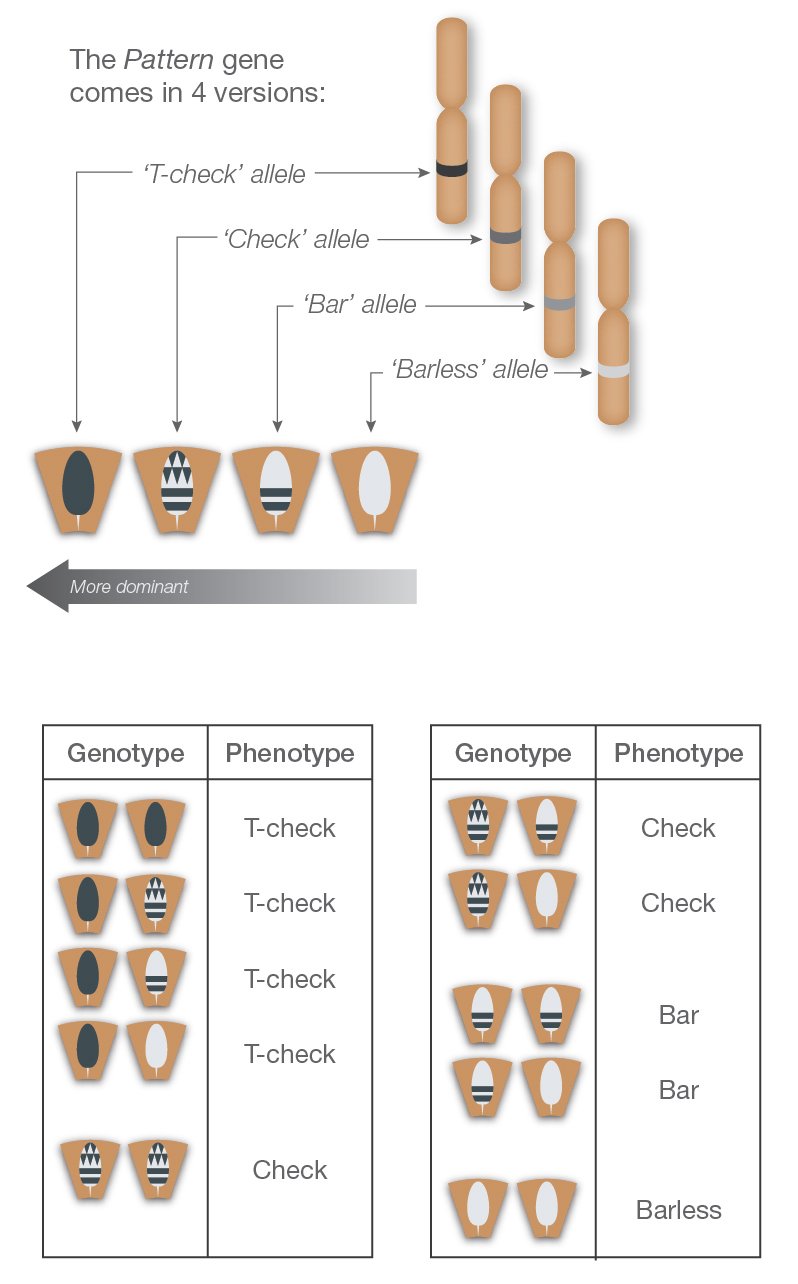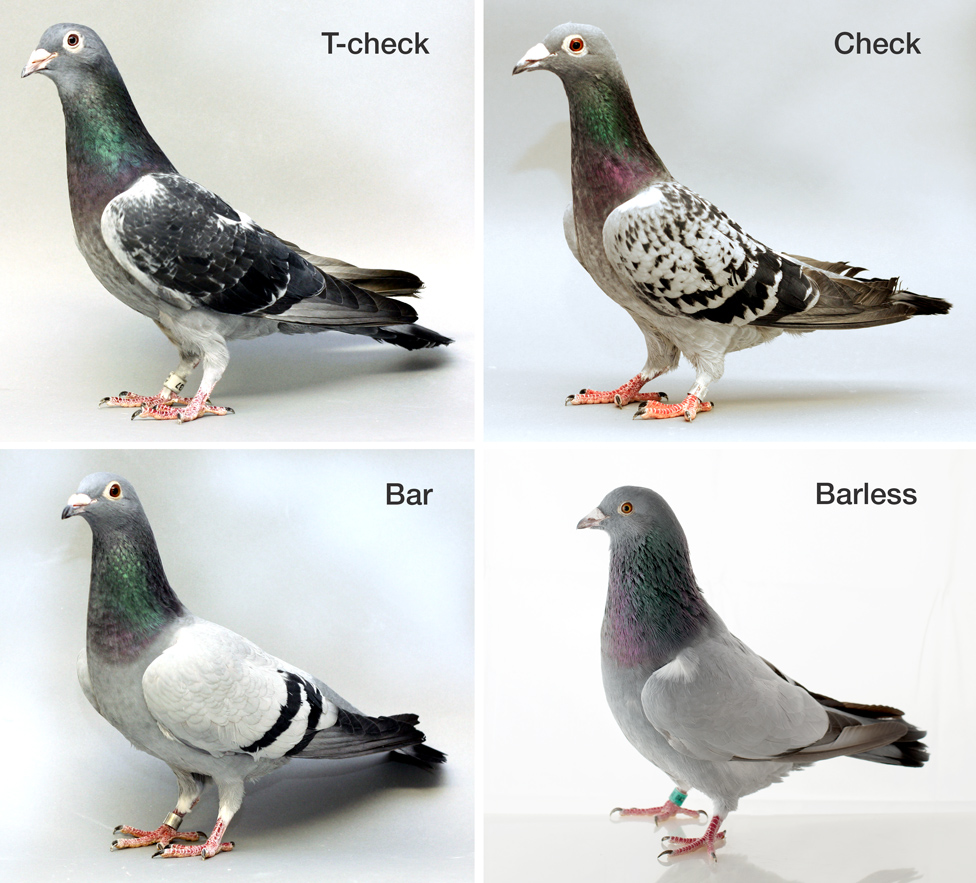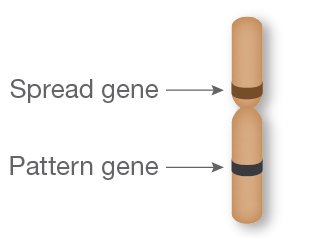
Wing pattern is controlled by a single gene, which comes in 4 different versions, or alleles.
Pigeons inherit two copies of the pattern gene, one from each parent. The two alleles together make up a bird's "genotype." What we see, also called the "phenotype," reflects the dominant-most allele in the genotype. 'T-check' is the most-dominant, followed by 'check', 'bar', and finally 'barless', which is recessive to all the others.
While this dominance pattern generally holds up, sometimes the less-dominant allele does have a small effect on the phenotype. For instance, a bird with one t-check allele and one bar allele may have flecks of lighter feathers rather than a solid black wing.
Pattern is a great example that shows the relative aspect of dominance and recessiveness. An allele is never simply “dominant” or “recessive.” It is always dominant to or recessive to another.
The term wild-type implies nothing about an allele's dominance. It simply refers to the allele that was most commonly found in the wild ancestor. Depending on the gene, the wild-type allele can be dominant or recessive to other alleles. In fact, 'bar', the wild-type allele for wing pattern, is dominant to 'barless' and recessive to 't-check' and 'check'.


